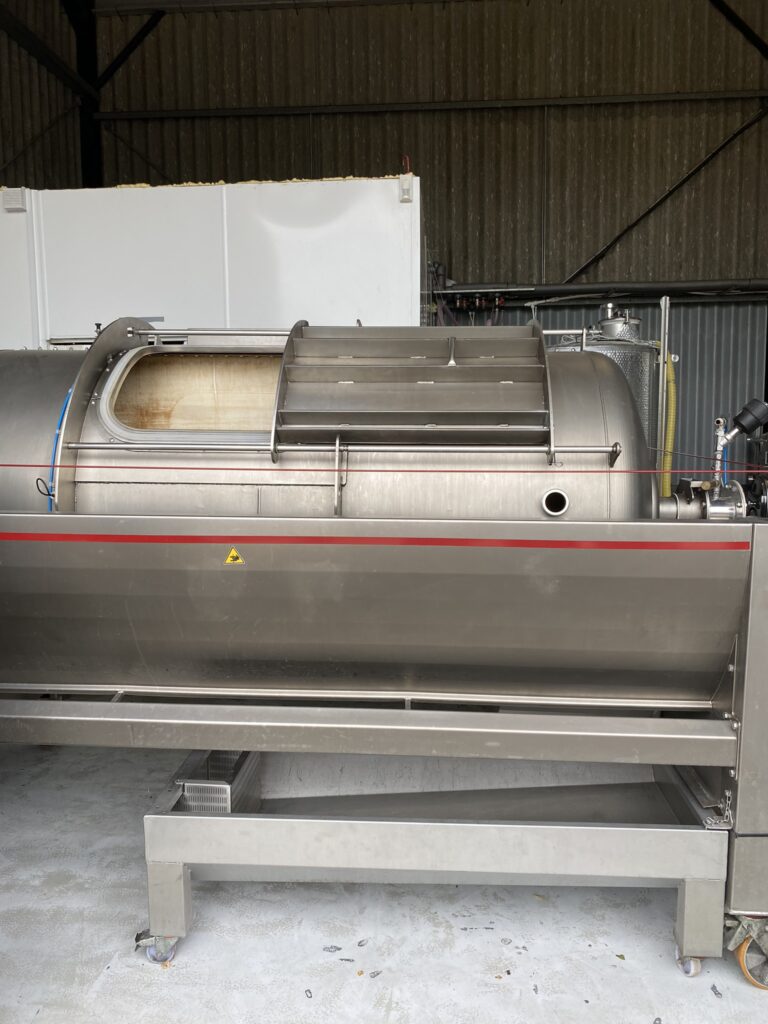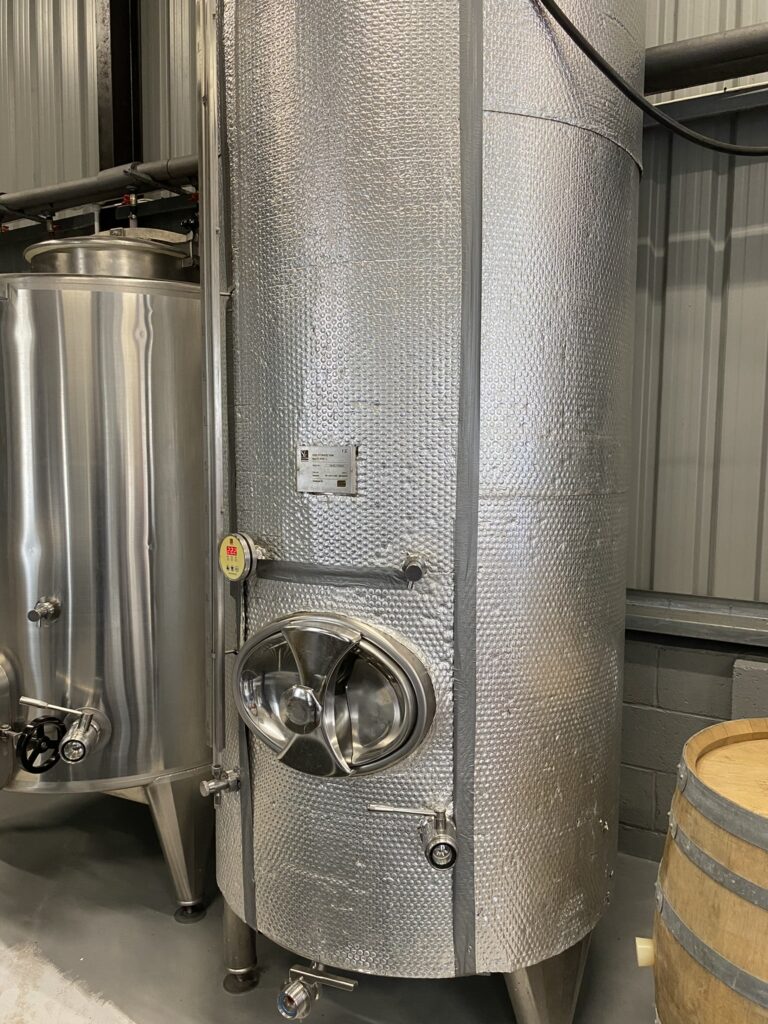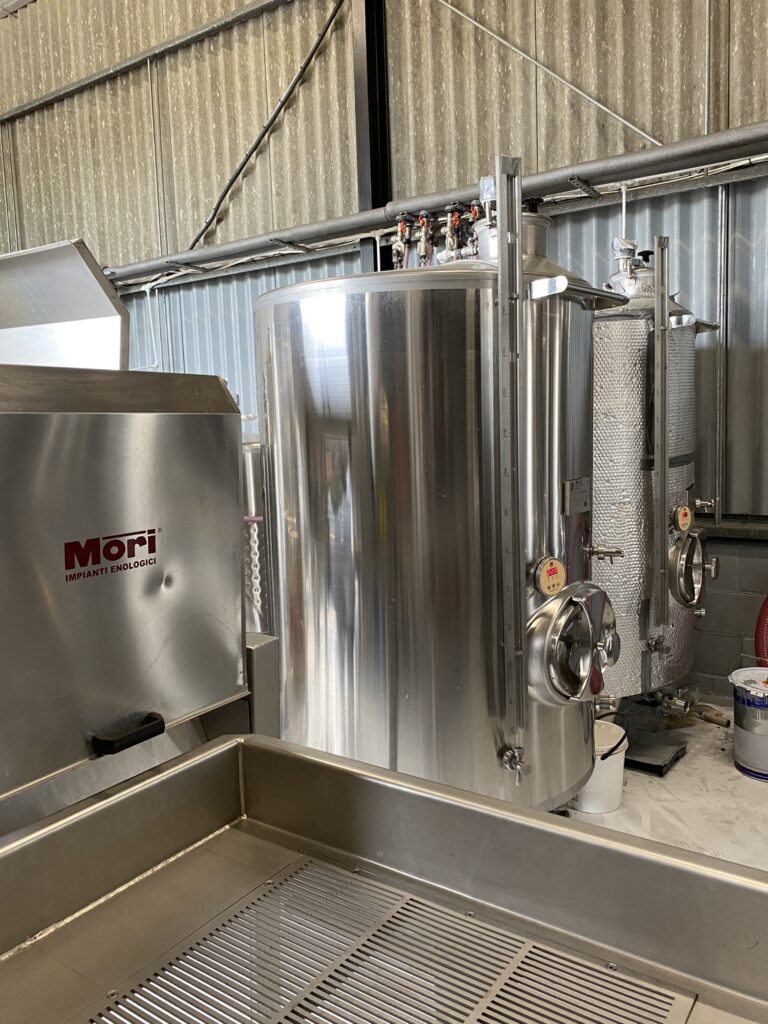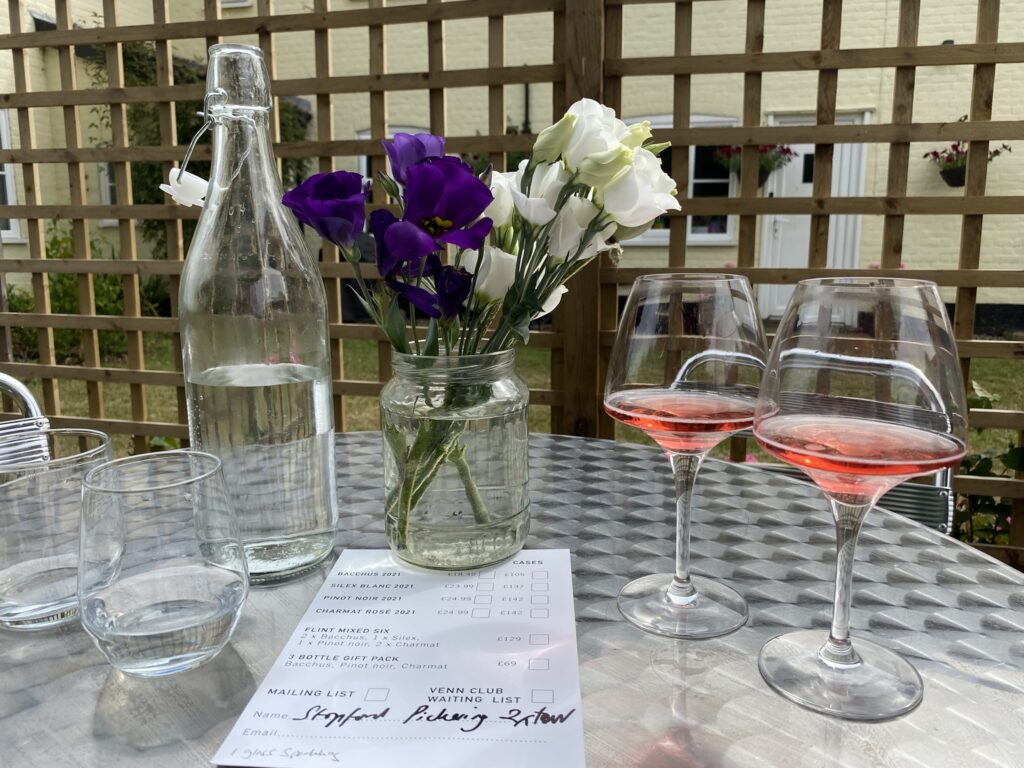flintvineyard.com Camphill Farm, Middle Road, Earsham, Norfolk NR35 2AH

Flint Vineyard is pristine! A traditional Norfolk Barn houses the cellar door shop with wine and other branded merchandise and here – as everywhere – everything gleams. The website’s pretty slick too – as one might expect from the former IT professional owner. It’s impressive and feels exciting.
The experience
Our tickets for the tour and tasting cost £25 each and there is also an add-on lunch option or the opportunity to buy a glass of wine and sit in the garden prior to the tour. Ben, the joint owner and wine production manager, was our guide. Although Ben is clearly very experienced on the vineyard management side, it was when speaking about the wine production that his enthusiasm and passion really came through. Flint, like other English vineyards, has a members’ club, but the difference here being that Flint members get to try exclusive, experimental releases – an exciting concept.
We started the tour in one of the fields of vines (Flint has 16 acres in total) which has a nice rolling slope. On completing his wine education, Ben had sought a suitable site and eventually found this one which was originally farmland. Flint grows three grapes: Pinot Noir Précoce, Pinot Blanc and Bacchus. To make their Silex and Charmat wines they bring in grapes from other local suppliers for the blends.

They take a sustainable approach to their viticulture. For example, soil disturbance is minimised by controlling weeds via mowing and strimming. The vines are hand pruned (2 people prune 1,000 vines a day!) and handpicked to ensure the best possible selection of fruit. The vines are trained by the vertical shoot positioning system along horizontal wires to ensure maximum exposure to sunlight.
We walked back to the winery where there is an abundance of immaculate shiny, stainless steel equipment to view. Ben invited us to look around and spoke about the winemaking process.



The grape sorter is used to remove mouldy or damaged grapes or non-grape matter. To make the Bacchus the grapes are crushed and destemmed in another machine – this to maximise the extraction of aromatic aromas from the skin (as is done with New Zealand Sauvignon Blanc).
For the Pinot Noir Précoce whole bunches of grapes are placed into the fermentation vessel to start a natural process of fermentation (carbonic maceration) as the weight of the bunches splits the skins. For both wines the grapes will be pressed to extract the juice. Flint’s press has a connected barrel allowing the juice to be maintained in nitrogen to keep it fresh and fruity and prevent oxidation.
Flint uses both stainless steel and oak to mature its wine although the oak barrels are purchased when a few years old, meaning that they will impart only subtle aromas to the wine.
Bottling is done on site by a mobile bottling plant which visits the site. The bottled wine is then labelled and matures in the shed next door to the winery prior to sale.
Ben likes to experiment with blends. Flint has focused on still wines (which they think England will continue to develop and expand on in future). The sparkling Charmat Rosé was an experiment and has proved popular!
Flint has also recently purchased a Roman clay amphora for fermentation and maturing the wine and it will be interesting to see what impact this has on their future wines.

We then returned to the pretty garden area where our allocated table had water, water glasses and wine glasses set out. We tasted four Flint wines, two white: Bacchus and Silex Blanc, a red: Pinot Noir Précoce and lastly their sparkling: Charmat Rosé. Ben talked us through the wines, how they were made, his tasting notes and suggestions for food matches.
Why you should visit
An innovative vineyard with the opportunity to engage and ask questions of the winemaker. A small, but interesting selection of wines to try and it’s great to have the tasting conducted by the winemaker which makes it really detailed and in depth. Friendly and welcoming, plus there is also a beautiful cellar door shop to browse.
New learning fact
Charmat is one of the methods of making sparkling wine. In the Charmat process the wine undergoes its secondary fermentation in a tank rather than in the bottle – meaning that the wine has less contact with the lees. It is a faster, more economical process and works well with grapes that are unlikely to age but in which one wants to preserve fresh, fruity aromatic flavours. It is the style used to make prosecco in Italy.

Recommended wines to try
Charmat Rosé: this wine has a vibrant pink-orange colour with a nose of strawberries and cream. Made the same way as Prosecco (which I’m not overly fond of) this wine has more acidity and complexity due to lees stirring and barrel ageing which is why I think I enjoyed it. It is really fruity but has body. A delicious summer drink.
Bacchus: pronounced aromas of elderflower, blossom, citrus and gooseberry. The winemaker suggested a little cinnamon too which I can detect. A refreshing, well rounded wine. Flint recommends with Fish & Chips!
Silex Blanc: this lovely wine has complex aromas of peach, apples, blossom, cedar, vanilla and orange – this latter derived from skin contact during the winemaking process. As this wine has more body than the Bacchus it can complement spicy or umami food as well as cheese.
Pinot Noir Précoce – the grape made to use this wine comes from Germany and has more colour and ripens earlier than Pinot Noir – making it suitable for the English climate. This light red wine has plummy, cherry, candy and spicy aromas with a little forest floor and cedar from its time in oak barrels. It is low in tannins and if you like Beaujolais, you may enjoy this wine. Flint suggest it would go well with pizza!